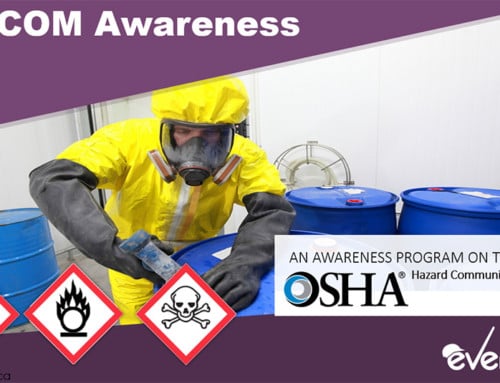Workplace Violence: Taking Reasonable Steps to Control it.
There’s no question that Workplace Violence negatively affects the safety and health of workers. It results in increased stress, emotional distress and can manifest in a number of ways, resulting in a dramatic decrease in job satisfaction.
What is Workplace Violence?
Most people think of workplace violence as being physical assault, but it’s actually a much broader issue. Workplace violence is any act where a person is intentionally intimidated, assaulted, threatened or abused in the workplace.
- Written or Verbal Threats: any time there is a threat of the intent to harm or hurt
- Behavior that’s Threatening: throwing objects, destroying property, shaking one’s fists
- Harassment: unwelcome behavior intended to embarrass, demean, annoy, alarm, humiliate, or verbally abuse another person. This might include intimidation, gestures, words, bullying, or other inappropriate activities
- Physical Attacks: shoving, hitting, kicking, pushing, punching, rape and assault
- Verbal Abuse: swearing, insulting, condescending language and name calling
- Other Forms of Abuse: pranks, starting rumors, vandalism, arguments, sabotage, theft, arson, anger related incidents and murder
Workplace violence not only affects the direct victims, but also their friends, family, coworkers and even those who witness the violence. To witness any signs of violence in the workplace leaves other workers concerned and uneasy, having a negative effect on their feeling of security and safety.
How Workplace Violence Affects Workers
The negative effects of workplace violence on employees are profound and include:
- Decreased morale
- Increased security costs
- Lost productivity
- An increase in litigation and the negative effects resulting from it
- Increased disability claims or workers compensation claims
- An increase in the number of sick days of workers
- Increased turnover of staff
- A decrease in job satisfaction and job loyalty
- An increase in workplace tension
- An increase in emotional issues that affect workers
Canadian OH&S Stats on Workplace Violence
Statistics Canada surveyed 24,000 households and the following is what they reported on workplace violence:
- 71 percent of the violent incidents in the workplace were physical assaults
- Men and women were equally affected and likely to report being the victim of workplace violence
- 27 percent of incidents that involved male victims resulted in injuries, whereas those that involved female victims only resulted in injuries 17 percent of the time
- One-third of all violent incidents in the workplace involved a victim who was working in health care or social assistance services (i.e. Care facilities, hospitals, residential care facilities, nursing facilities)
- There are a high number of incidents against those who work in food services, accommodations, wholesale trade, retail or the educational services sectors
- 37 percent of violent incidents in the workplace are reported to the police compared to only 17 percent that occur outside the workplace
Workplace Violence – The Legislation
Most OH&S legislation in the United States includes a ‘general duty provision’, which requires that employers take every precaution that is reasonable to protect the health and safety of their employees.
Canadian workplace violence legislation is much more stringent and contains specific federal and provincial provisions requiring employers to actively take steps to eliminate violence in the workplace. Ontario’s Bill 168 is one of the most recent and well known additions to Canada’s workplace violence legislation. All legislation typically requires that employers:
- Develop and implement a written workplace violence prevention policy
- Conduct risk assessments to determine the level of risk that exists in the workplace
- Implement preventive measures to eliminate or significantly reduce the risk of violence
- Implement controls to manage workplace violence in the event that it occurs
- Provide Workers and Supervisors with comprehensive workplace violence training
- Develop and implement post incident management programs that include reporting, investigation and follow up procedures
- Evaluate the program to ensure its effectiveness
Blended Learning Approach: What about Online Workplace Violence Training?
Delivering comprehensive workplace violence training to the entire workforce is one of the most effective measures a company can take to significantly reduce the risk of violence. Taking a blended learning approach that includes online workplace violence training can help employers meet their legislative requirements quickly without many of the hassles associated with traditional training methods.
Some of the benefits of including a blended learning approach in your workplace violence prevention strategy:
- Consistency: Delivery of consistent training eliminates the potential for missed critical information and ambiguity
- Improved Productivity: Eliminate or reduce losses in productivity associated with classroom training
- Site-Specific: Face-to-face interaction can still occur while providing work-site specific elements of training
- Ensure Delivery: Automatic facilitation and tracking of training so that employers can be 100% certain of who has received training
- Simple Due Diligence: Automated training records allow employers to easily demonstrate due diligence and competency to legislative officials when requested
- Enhanced Learning: Quality Online Workplace Violence Training that contains scenario-based learning allows workers to practice what they’ve learned, enhancing their learning experience
While Workplace Violence continues to be a problem in various sectors, employers can definitely, with adequate care, planning and follow through, take reasonable steps that significantly reduce the potential for violence to occur.






